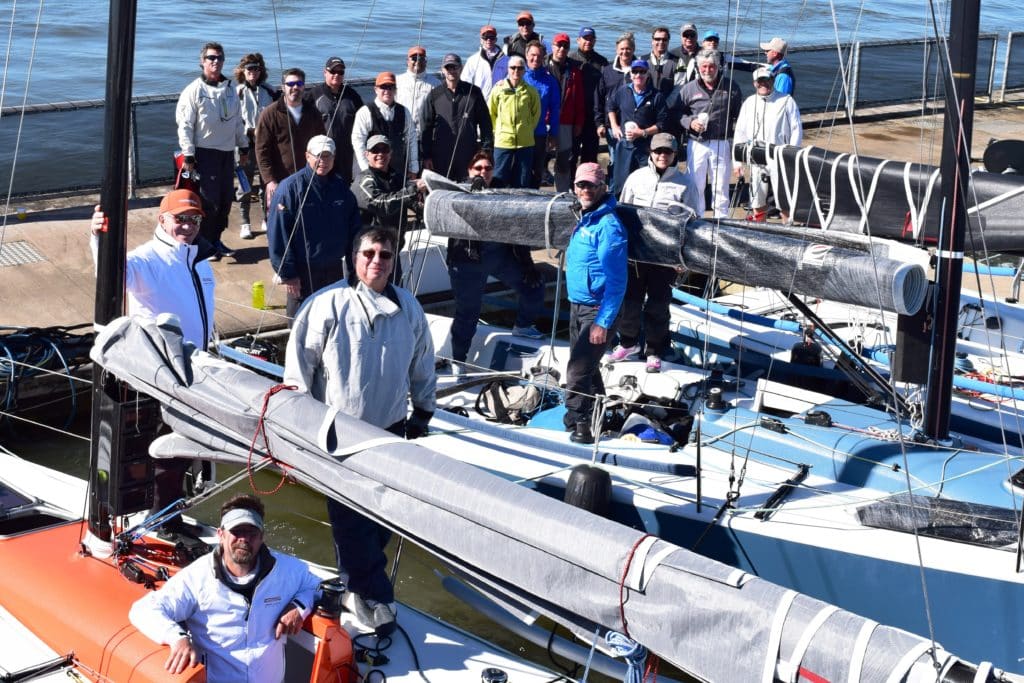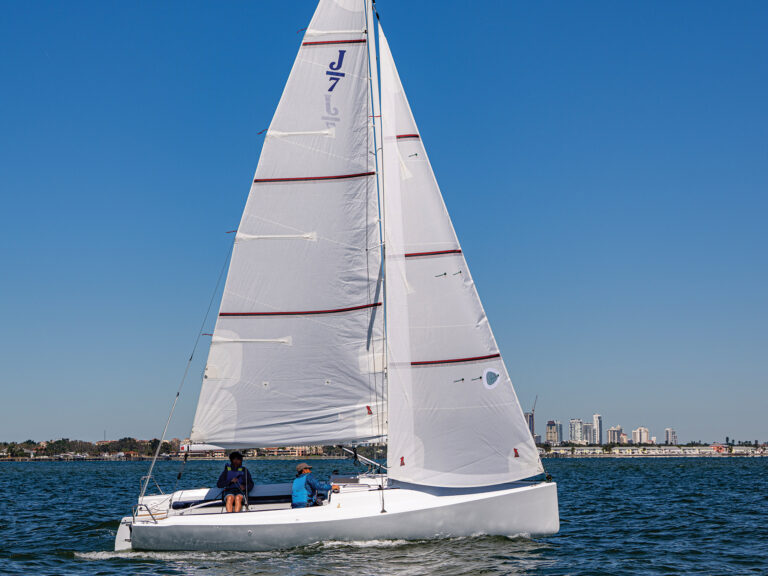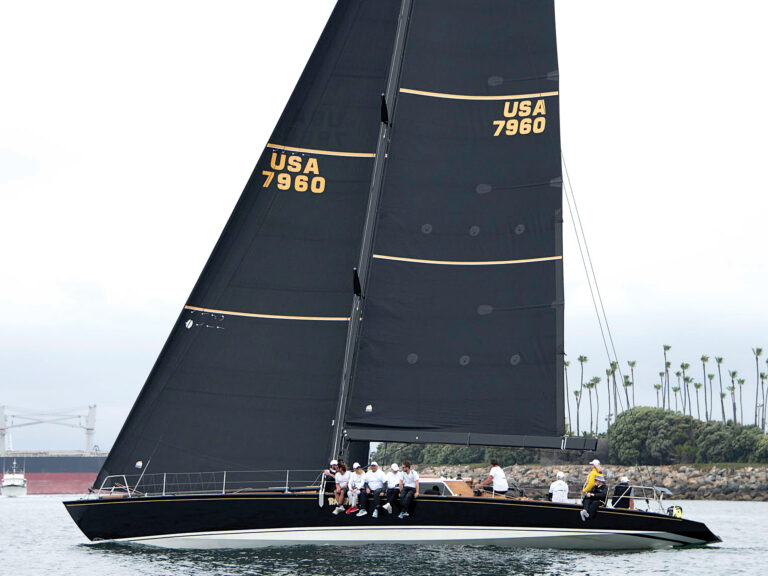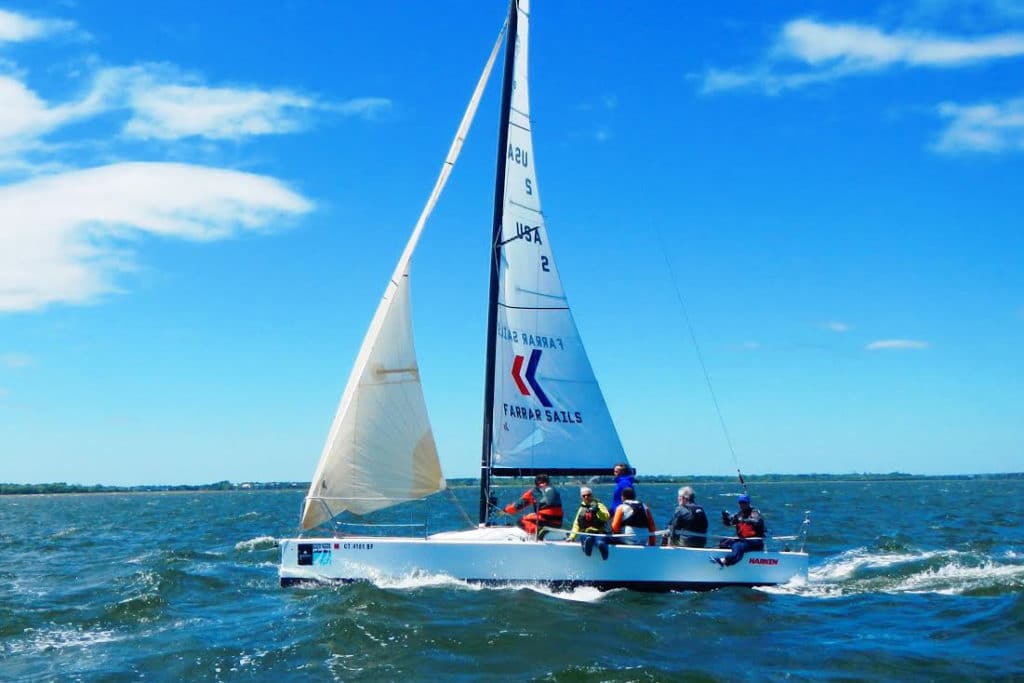
As I stepped on board Pithy, a Donovan, GP 26 based out of New London CT, for the first time on a blustery, rainy, overcast Charleston morning, I felt thankful that our fleet would be racing on Circle 1 near the battery. As it turned out, the offshore conditions, waves 6-8 feet and gusts over 35 kts, were such that the first day of racing for the outside courses was cancelled. From our slip among 4 other GP 26s based as far away as Detroit, I could see our racecourse. I was instantly struck by how friendly the owners, skippers, crew and shore teams from each of the boats were. Though I had raced with many in Key West and back home on the Chesapeake, a few were new, and the comradery was instant and authentic. We shared thoughts from testing, tales of woe, compared notes and bruises, and finished each day with a few beers on the dock.
My boat, skippered by Kevin Farrar from Farrar Sails, is the collaborative prototype that started the Jim Donovan GP 26 design. With Jim also on board, I was excited to get to sail with the designer and learn more of the story of how these boats were born. From the outset, I knew ours would be an uphill climb. Delays in launching and delivery had eaten our planned practice, so our dress rehearsal also became our debut. Our first practice would be in over 20 kts, rain, and on the main stage in race number one. It took time for our crew work to gel, for each of us to find our narrow lanes to cross the deck in a tack, and to get the timing that is so critical for the spinnaker sets and douses. We set realistic goals, we all agreed that yelling wouldn’t make the boat any faster and that until such time as we had all our maneuvers down, it didn’t pay for us to mix it up in traffic any more than necessary. We wanted a clean start, an open lane, and room at the marks. As Mike Tyson once said, “Everyone has a plan until they get punched in the mouth”, and such was the case with us. Within two races we had violated all of our best laid strategies and settled into a slightly more reactive style of racing.
Most of us have remarked while racing and seeing another boat with sheets in the water, or a sail trimmed poorly, or perhaps a crewmember being dragged behind, “That’s not fast”. It is so much easier to point out the failings of others than it is to take responsibility or ownership for our own mistakes. I found myself guilty of this, despite being far from the front of our fleet. On day one while rounding the weather mark, our competitor, Rhumb Punch, fouled the mark and shortened the course for us. As I saw them being swept by a strong flooding current dragging the mark I, of course said, “That’s not fast”. I thought perhaps they had done this to help us catch up a bit, though after they did their circle they still remained in front. A few of the GPs in our fleet are now running a takedown system on their spinnakers and, as with any new system, it takes time and practice to get it down. During one set at the weather-offset mark, I noticed that this line was still quite taught and caused a deep crevasse in the sail, to which I of course remarked, “That doesn’t look fast”.
On day two, with the breeze still up but the sun coming out, the VX-Ones joined us on the race course; their day one having been postponed due to a class wind ceiling. As we banged the corner upwind, I noticed one of the VX-Ones upside down and another sailing against the fleet. It appeared they had not turned down at the offset. I instinctively thought, “Well…that’s not fast.” Then I realized there was no crew on the boat — all three had been ejected, and the boat continued on… actually quite fast indeed.
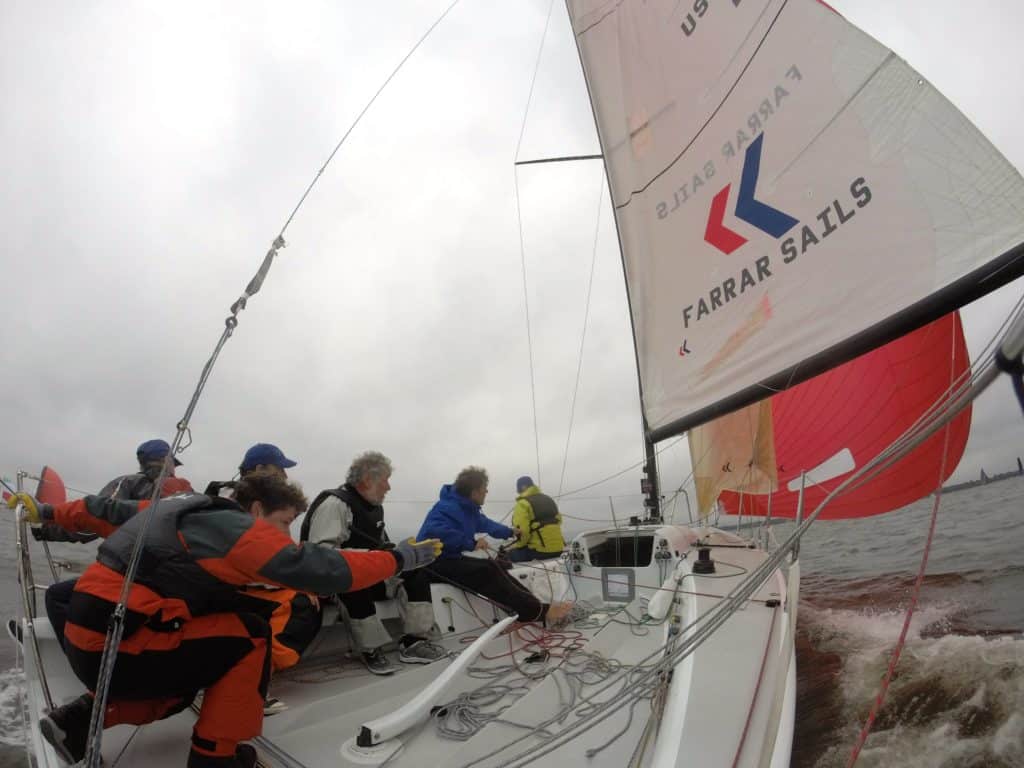
It seems even the race committee was not immune to their share of mishaps. As we came to the leeward gate, teetering on the edge under our big A2 in the breezier part of the day, I happened to notice a small fire aboard one of the Race committee safety boats. Between races we watched as they were towed away with both outboards melted and no longer operational…and not fast at all.
Ever the consummate optimist, I reminded our crew that we haven’t yet made the same mistake twice, though they quickly reminded me that we had crossed pretty much all of them off the list!
But as with every story, it cannot rain all the time; there must be strikes along with gutter balls. Our strike, relatively speaking, came on our one error-free race. Kevin managed a great start and our upwind work was solid. We rounded the weather mark among the fleet, had a great spinnaker set and turned down. We had changed to the heavy air spinnaker, and it seemed to pay off. Two quick jibes later and we found the right gate and the left side of the course upwind working well in the strong current. Though we had overcome much adversity and were proud of crossing third over the line; we soon saw the real time scoring and noticed that we had in fact still corrected to last. As with all good racers we blamed the ORC rating, but felt proud of our effort. That was to be our final glimpse at glory; in the remaining races we had a round up (not fast), a fouled sheet (not fast), got caught on a crab pot (very unfast) and managed to simultaneously launch our heavy air spinnaker and about half of the light air kite (definitely not fast at all).
Although many of our Charleston moments were varying degrees of “not fast”, what struck me was how much fun it all still was. After day 2 John and Linda Edwards from Rhumb Punch invited all the boats to their house for a cookout. They organized quite a BBQ and dance party, though I suspect it was partially to keep the competition up late celebrating. The GP 26s surprised us all how well behaved and manageable they were in the heavy breeze. We stayed positive (for the most part) and we worked together to solve the immediate crisis. We improved each race and had fun getting faster. For the podium finishers, Sprint 6, Supra, and Rattle and Rum, fast was in high supply. Rattle and Rum, skippered by Mike Beasley, had a total of 7 bullets and sailed away from the fleet. Peter Darista improved greatly on his Key West Race Week performance on “Supra” and finished second place overall with two firsts and was consistently in the top 3 to finish. Sprint 6 from Detroit, owned by John Stevens, drove from a DNF first race to third overall and showed an upward trend getting the boat and crew dialed in. Another Charleston Race Week is in the books, and though our result wasn’t what I had hoped, the crew and boat finally found some Fast!
